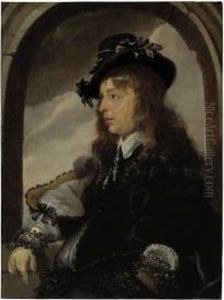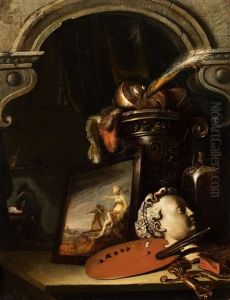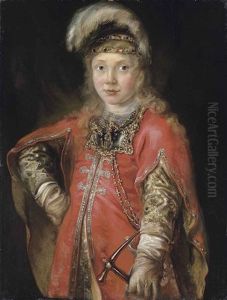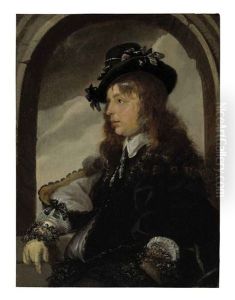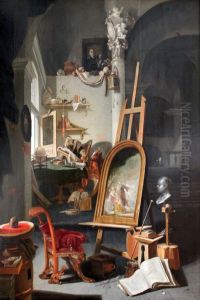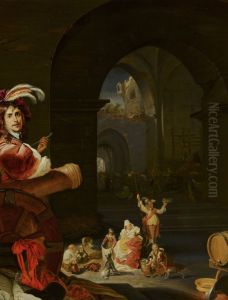Karel Slabbaert Paintings
Karel Slabbaert was a Flemish painter and art dealer, born in 1618 in Middelburg, a city that was part of the Dutch Republic during his lifetime but is historically and culturally connected to Flanders. His life and career are somewhat obscure, partly due to the lack of comprehensive contemporary documentation, a common issue for many artists of his period. However, through the art and scant records that survive, we can piece together the outline of his contributions to 17th-century art.
Slabbaert's work is often characterized by its detailed execution and the influence of the Flemish Baroque tradition, a movement known for its dramatic use of light and shadow, vivid detail, and emotional intensity. Although not as widely recognized as some of his contemporaries, Slabbaert's art provides valuable insights into the stylistic and thematic diversity of Flemish painting during this time. His oeuvre includes religious subjects, genre scenes, and possibly portraits, though the attribution of many works remains uncertain due to the common practice of not signing art during this era.
Little is known about Slabbaert's training, but it is likely that he received a traditional apprenticeship in the workshop of a master painter, as was customary. This period of study would have provided him with a thorough grounding in drawing, painting, and the artistic conventions of the day. Following his training, Slabbaert established himself in Middelburg, where he worked and lived for most of his life. His decision to remain in Middelburg, rather than move to a more prominent art center such as Antwerp or Amsterdam, may have impacted his visibility in art historical records.
In addition to his work as a painter, Slabbaert was active in the local art market as a dealer. This dual role was not uncommon among artists of the period, who often traded works to supplement their income and build networks with other artists and patrons. Through his dealing, Slabbaert would have had access to a wide range of artworks, which may have influenced his own artistic development.
Karel Slabbaert's death in 1654 marked the end of a career that, while not as celebrated as some of his peers, contributed to the rich tapestry of Flemish art. His legacy, like that of many artists of his time, is a testament to the depth and diversity of talent that flourished in the 17th century. Though specific details of his life and work may remain elusive, the surviving pieces attributed to him continue to offer a glimpse into the artistic landscape of his time.
